Richard Shelton on Arctic Exploitation
Is it too much to hope that a region once revered by its native people will be respected by those who now seek its riches? Three recent books delve into the matter.Three recent books look at a region that once was an object of reverence and now is a target of capitalists and others.
This review originally appeared in The TLS, whose website is www.the-tls.co.uk, and is reposted with permission.
James VI, King of Scots, memorably described the kingdom of Fife, surrounded as it was by some of the most productive seas in Europe, as “A beggar’s mantle fringed with gold”. To an extent, the same description could be applied to the frozen wastes of the high Arctic, in that the lives of many of their highly specialized inhabitants, including pelagic birds, seals, walruses, whales, polar bears and many an arctic fox feeding its young on fledglings, ultimately depend on biological events in the nutrient-enriched waters to the south of the main ice sheets. Here, bathed in the perpetual sunlight of high summer, the growth and reproduction of algal cells lie at the base of a food chain as productive in biomass, though not in diversity of species, as the richest of rainforests.
Summarizing the anthropological history of the Arctic, Richard Sale, in The Scramble for the Arctic, introduces us to the demanding world of the hunter-gatherers who were also children of the northern seas and were, for millennia Homo sapiens’s only representatives in the high latitudes. Their precise origins have yet to be fully worked out but, from their first migrations from their southerly calf country, we can be sure that they dealt in the same biological currency as their prey, namely the energy required to fuel their growth, early survival and reproduction. Both physiological and cultural adaptations were driven by these unforgiving imperatives. Thus the anatomical and physiological characteristics best suited to survival in bitter winter cold and intense summer sunlight were reinforced by animistic religious beliefs that conferred a spiritual status on the creatures upon which their longterm survival depended.
Among the Inuit of Alaska, for instance, respect for their quarry was incorporated into their day-to-day lives by a long-established habit of storytelling. As in many an oral tradition, the wording of such stories was often preserved down the generations by expressing them rhythmically. The result, even in translation, is still profoundly moving to a modern ear, as in the following chant recalling the death of a bowhead whale.
Come oh sea lord, chief of the waters. We are your friends!
We wish you well. We bring you to a place to do you great honour.
You are dying but your death will not be forgotten.
We will strip your bones of flesh, but we will send them back to the sea that you may live again, so fear not.
Let us lead you to the Kaniagmiut, people who admire you, great lord of the ocean.
The Future History of the Arctic
By Charles Emmerson
PublicAffairs, 448 pages
The Scramble for the Arctic: Ownership, Exploitation and Conflict in the Far North
By Richard Sale and Eugene Potapov
Frances Lincoln, 232 pages
The Arctic Gold Rush: The New Race for Tomorrow’s Natural Resources
By Roger Howard
Continuum, 259 pages
It is clear from Sale’s admirable historical account of human circumpolar settlement that, for millennia, the populations of these hardy folk were rarely larger than the availability of their prey or the migrating herds of reindeer, with which some cultures lived, could sustain. Problems first arose when the resources of the Arctic were exposed in both North America and Eurasia to exploitation by metal-using societies far to the south. For such peoples, whose relative abundance was ultimately derived from the increased food supply conferred by agriculture, the exclusive use of particular areas of land mattered more than tribal hunting rights. Furthermore, they reserved spiritual status only for man to whom, under the Judaeo-Christian tradition, dominion over the natural world had been given. Above all, these children of the south had developed a commercial culture which broke the hunters’ link between the abundance of their quarry and their capacity to reproduce which underlies all naturally sustained predator-prey relationships. Fishery resources, whales, manatees, seals, walruses, sea otters and a variety of fur-bearing terrestrial mammals including sable, arctic fox and both North American and Eurasian beavers were subjected by the commercial hunters to new levels of mortality. Fortunately for most of the victim species, capture rates fell below economic levels before extinction loomed. Sad exceptions were, in the Pacific, Steller’s sea cow and in the Atlantic, the grey whale.
Until relatively recently, international tension over the commercial exploitation of the non-living resources of the high Arctic was largely confined to competition for living resources and the somewhat messy arrangements whereby Russia has long been allowed to mine coal in Svalbard, an archipelago under Norwegian jurisdiction. Central to all commercial activity is the issue of ownership, both of the right to exploit and of the places where the exploitation takes place. When the core of the area of interest is a largely landlocked sea covered by ice so thick that it has many of the properties of the land masses with which in winter it is often contiguous, defining ownership is unusually difficult. Similar uncertainties apply to rights of navigation by warships and merchant vessels as well as access to the seabed. Two main developments have increased the scope for militant competition among the principal Arctic nations. The first was the invention of the nuclear submarine, a vessel capable of undertaking long patrols under the ice cap and, indeed, of surfacing through it. The second is the climatically driven reduction in ice cover which opens up the navigational potential of both the North West and North East Passages and also facilitates access to the hydrocarbon and other resources of the Arctic seabed. Sale provides an authoritative summary of the main issues confronting governments and corporations, and the consequences for the descendants of the original inhabitants.
The emphasis of Roger Howard’s The Arctic Gold Rush is on the effect of a thawing Arctic on the relationships between the socalled “Arctic Five” — Russia, the United States, Canada, Denmark (on behalf of Greenland) and Norway. As with Sale’s book, the immediate stimulus for Howard’s was the disturbing news that, on August 2, 2007, a Russian submarine had planted the Federation’s national flag on the seabed 14,000 feet directly beneath the North Pole. Although not such an immediate claim to sovereignty over the whole of the Arctic region between Russia’s long northern coastline and the Pole as the popular press might have us believe, this bold action by a resurgent nation, buoyed up by sales of hydrocarbons to Europe, is alarming enough. Howard interprets this action and other more overtly threatening ones, such as the recent Russian naval exercise among Norwegian oil platforms, as no more than aggressive posturing. Let us hope he is right: the human and environmental consequences of even a localized Arctic resource war would be disastrous. But the rewards for any nation able to secure the lion’s share of what Howard estimates to be 13 per cent of the world’s undiscovered oil reserves and as much as 30 per cent of its gas, would be enormous, so high-risk diplomatic options are certain to be pursued. The potential for confrontation over rights of passage is also increasing, even between such close allies as Canada and the United States. They will undoubtedly increase further should the melting of the Arctic ice cap render the North East and North West Passages economically viable trade routes. Here, perhaps, the prospects for international agreement are ultimately greater, given the potential economic benefits to coastal states. In summary, as Roger Howard points out, all of the issues raised by any “Scramble for the Arctic” are much more complex than its nineteenth century counterpart, the so-called “Scramble for Africa”, a purely terrestrial competition largely uncomplicated by the presence of local nation-states. Howard has exposed the main issues raised with clarity.
In his magisterial The Future History of the Arctic, Charles Emmerson uses first-hand knowledge and detailed analysis to provide a comprehensive picture of the recent history and likely international future of the Arctic ice cap, seabed and terrestrial hinterland. His account explores and greatly extends the issues raised by Sale and Howard. Like them, his penetrating interest in the top of the world, which began in his Australian childhood, was fired by what he had heard of the heroics of Fridtjof Nansen and his fellow explorers. Two world wars and a technological revolution later, their vision of the Arctic as a theatre for courageous endeavour has been supplanted by the realpolitik of industrial economies competing for resources to exploit. In the process, the Arctic has moved from the fringes to the centre stage of international relations. Nation by nation, Emmerson explains how this profound change has come about and what the international consequences are likely to be in the coming century. Underlying his analysis is the central truth that fossil fuel and mineral resources are not inexhaustible and that exploitation of the non-living resources of the Arctic can do no more than extend the period over which Northern economies will be able to maintain their growth rates by stripping the natural world of its geological assets. That countries will compete strongly to participate in this unsustainable activity is the conclusion of all three authors. Just how far major powers like the Russian Federation and the United States will be prepared to take the competition is still unclear. Emmerson, with the attention to detail which is the hallmark of his scholarly book, provides an insightful analysis of the last four decades of military competition in the region. Like Howard, his short-term conclusion is guardedly reassuring, but the longterm risk of armed conflict in the Arctic remains. How remote Nansen’s Arctic now seems and how far we have spiritually fallen since tiny bands of Inuit hunters last sang to their dying bowhead whales.
|
Richard Shelton’s “To Sea and Back: The Heroic Life of the Atlantic Salmon” was published in 2008. |
Independent journalism is under threat and overshadowed by heavily funded mainstream media.
You can help level the playing field. Become a member.
Your tax-deductible contribution keeps us digging beneath the headlines to give you thought-provoking, investigative reporting and analysis that unearths what's really happening- without compromise.
Give today to support our courageous, independent journalists.



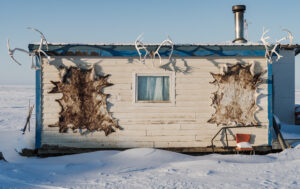
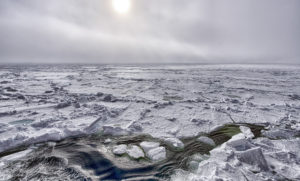
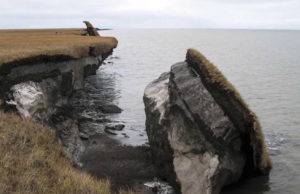
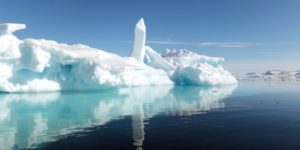
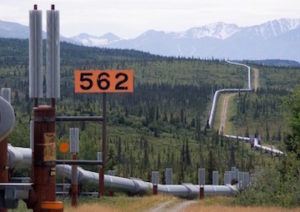

You need to be a supporter to comment.
There are currently no responses to this article.
Be the first to respond.